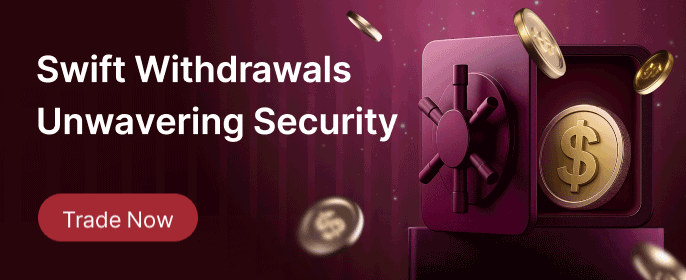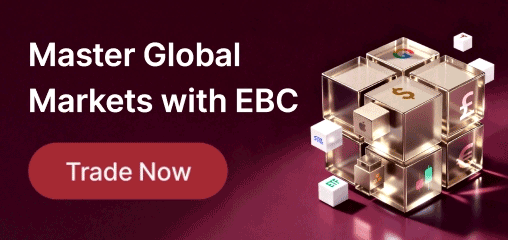When it comes to forex trading, lot sizes are key. In currency trading, lot size means the amount of currency being traded. It's the size of a trade and how much risk and reward you have in a trade. In forex, lot size can make a big difference in your trading strategy, risk management and profit.

A lot in forex trading is the standard unit of measurement to measure how much currency you are buying or selling. Understanding a lot in forex is important for trading. Forex brokers offer different lot sizes to suit different traders. The most common lot sizes are:
Standard Lot: A standard lot is 100,000 units of the base currency. For example if you are trading EUR/USD, a standard lot is 100,000 euros. Trading with standard lots is high exposure so it's suitable for experienced traders or those with big accounts.
Mini Lot: A mini lot is 10,000 units of the base currency. It's for intermediate traders who want to take less risk than trading standard lots. Mini lots are used by traders who are still learning but want to trade with some seriousness.
Micro Lot: A micro lot is 1,000 units of the base currency. It's for beginners or those with small accounts because it's lower risk exposure. Trading with micro lots is a way to practice strategies without putting too much money on the line.
Nano Lot: A nano lot is 100 units of the base currency. It's not commonly used but is available with some brokers. Nano lots are for traders who want to trade with minimal risk, often for practice or testing strategies. Forex traders set minimum and maximum lot volumes for their trading accounts, most accounts have a minimum of 0.01 lots and maximum of 100 lots.
 Lot Types
Lot Types
In forex market there are four types of lots: standard, mini, micro and nano. Each type of lot represents different amount of currency units and traders can choose the lot size that suits their trading strategy and risk.
Standard Lot: Standard lot is the biggest lot size in forex trading, 100,000 units of the base currency in a currency pair. This lot size is used by professional traders who have big Trading Account and willing to take higher risk.
Mini Lot: Mini lot is one-tenth of a standard lot, 10,000 units of the base currency in a currency pair. This lot size is used by retail traders who have small trading accounts and want to manage their risk.
Micro Lot: Micro lot is one-tenth of a mini lot, 1,000 units of the base currency in a currency pair. This lot size is used by beginners who want to try forex without risking much.
Nano Lot: Nano lot is the smallest lot size in forex trading, 100 units of the base currency in a currency pair. This lot size is used by traders who want to test their strategies with minimal risk.
Lot Size in Forex Market: Why It Matters
Choosing the right lot size in forex trading is important for your account risk management. Since currency values move in small increments the size of your lot can magnify gains or losses. Here's why understanding forex lot size is important:
Risk Management: A robust risk management is key to successful Forex trading.
Risk: Larger lot sizes can give bigger profits but also come with higher risk. A standard lot for example will give you big gain or loss for a small change in currency value. Smaller lot sizes like micro or nano lots will minimize your exposure.
Leverage: Forex trading involves leverage which magnifies both gains and losses. Choosing the right lot size will help you manage the leverage and prevent your trading account from blowing up too fast.
Trading Strategies: Different strategies require different lot sizes. For example scalping may use small lot sizes to minimize risk in quick trades, long term trading may use bigger lot sizes if the account balance allows it.
How to Choose the Right Lot Size for Your Trading with Risk Management
Choosing the right lot size in forex trading requires careful consideration of your risk tolerance, account size, and overall trading strategy. Striking a balance between conservative and aggressive approaches can help you develop a Risk Management Plan that effectively navigates both gains and losses.
To determine the appropriate lot size, consider your risk tolerance first. It's essential to ask yourself how much you are willing to risk on a single trade. A common guideline is to limit your risk to no more than 1-2% of your trading capital. For example, if your account balance is $10,000, you should aim to risk only $100 to $200 on any given trade.
Next, be mindful of the leverage you are employing. While higher leverage can enable you to control larger positions, it also amplifies the potential for significant losses. Adjusting your lot size in accordance with your leverage will help you manage your exposure and mitigate risks.
Lastly, take advantage of lot size calculators available on your trading platform. These tools can simplify the process by calculating the optimal lot size based on your risk tolerance and the specific currency pair you are trading. Utilizing these resources can lead to more informed and confident trading decisions.
Risk Management
Risk management is a crucial aspect of forex trading, as it involves strategies to protect against financial loss in trades. One essential component of risk management is position sizing, which refers to determining the size of a trade based on the amount of money a trader is willing to risk. For instance, a trader might choose to allocate just 1% of their trading account equity to any single trade. If their account balance is $10,000, this means they would only risk $100 on that trade.
Another vital strategy is the use of stop-loss orders. By setting a predetermined price level at which the trade will be closed if the market moves unfavorably, traders can limit their potential losses. For example, a trader may set a stop-loss order 50 pips below their entry price, thereby protecting their account from larger losses.
Additionally, considering the Risk-Reward Ratio is fundamental in risk management. This involves establishing a ratio between potential profit and potential loss. A common approach is to set a risk-reward ratio of 1:2, meaning the trader is willing to risk $1 to earn $2. This ensures that the potential reward justifies the risk involved in the trade.
By employing these risk management strategies, traders can effectively limit their losses while maximizing potential profits, ultimately contributing to long-term success in the forex market.
Lot Size in Action with Currency Pairs
Let's say you are trading the EUR/USD pair with a standard lot of 100,000 units. Forex trading assets like the EUR/USD pair require understanding the financial requirements for trading standards and micro-lots. If the price moves 10 pips in your favour you'd make a profit of $100 (since one pip in a standard lot equals $10). But if the price moves against you by 10 pips you'd lose $100. Now if you were trading a mini lot of 10,000 units the same 10 pip movement would result in a $10 profit or loss, reducing your risk significantly. Compared to traditional stock trading, forex trading offers smaller contract sizes, higher leverage and more flexibility.
Now you know what is a lot size and how to use it. Choose the right lot size and you'll manage your trades better, limit potential losses and overall have a better trading experience. Remember to include your risk tolerance and leverage in your Trading plan.
Disclaimer: This material is for general information purposes only and is not intended as (and should not be considered to be) financial, investment or other advice on which reliance should be placed. No opinion given in the material constitutes a recommendation by EBC or the author that any particular investment, security, transaction or investment strategy is suitable for any specific person.




 Lot Types
Lot Types






















